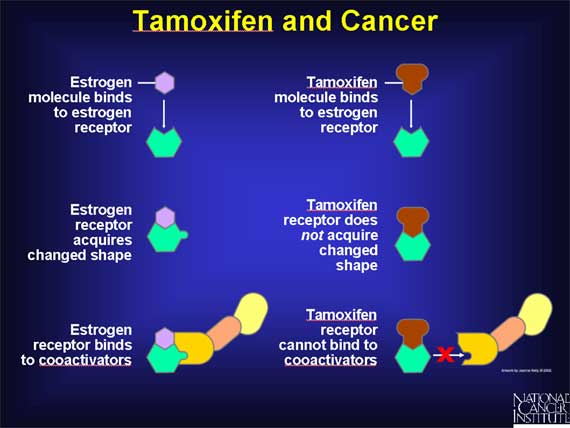|
The first SERM to be investigated extensively for its anticancer properties is a drug called tamoxifen.
Tamoxifen blocks the action of estrogen in breast tissue. Tamoxifen exerts this antiestrogenic effect by binding to the estrogen receptors of breast cells, thereby preventing estrogen molecules from binding to these receptors. But unlike the normal situation, when estrogen binds to its receptor, the binding of tamoxifen to the receptor does not cause the receptor molecule to acquire the changed shape that allows it to bind to coactivators. As a result, the genes that stimulate cell proliferation cannot be activated.
By interfering with estrogen receptors in this way, tamoxifen blocks the ability of estrogen to stimulate the proliferation of breast cells.

< Previous | Index | Next Slide > |